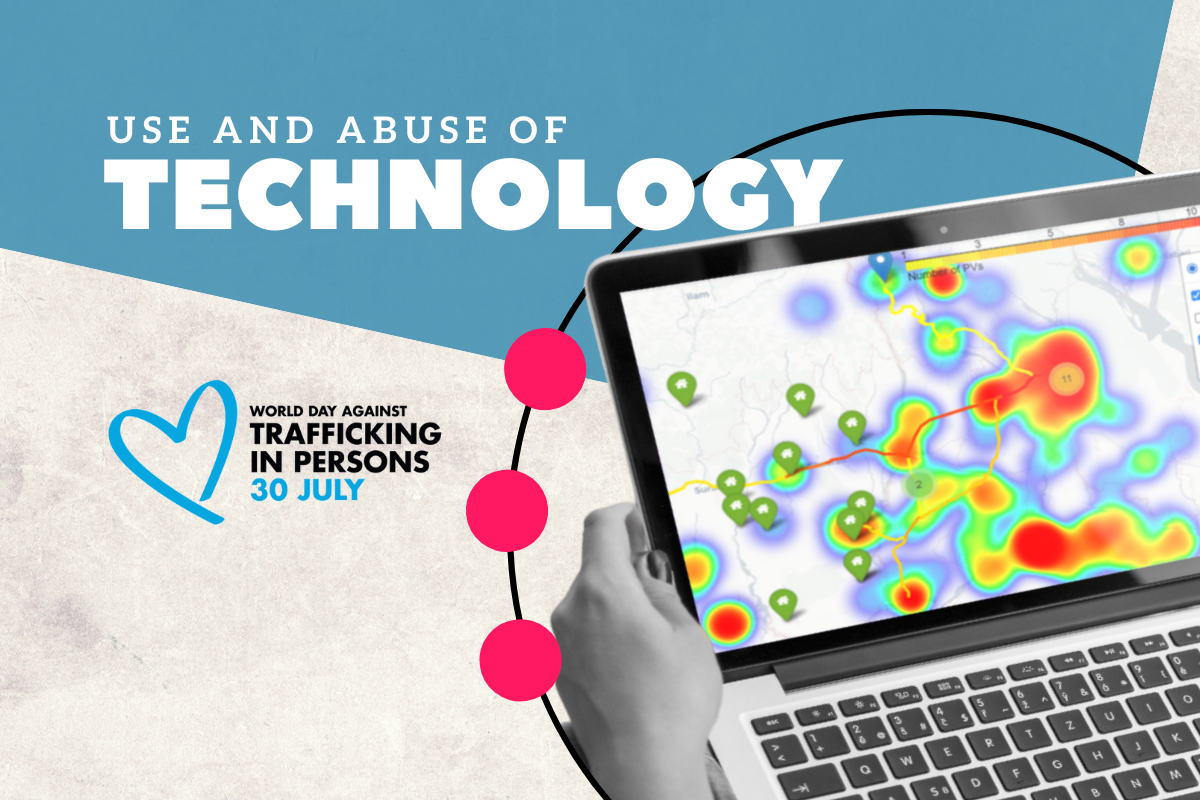
© UNODC
The theme of this year’s World Day against Trafficking in Persons is “use and abuse of technology”. Below, find examples of how technology can be harnessed to detect, rescue, and support potential or exploited trafficking victims.
The Internet is part of everyday life for billions of people around the globe. Daily activities that once necessitated in-person interaction – from shopping to romance, banking, and even health care – are now, not least due to the COVID-19 pandemic, commonplace online.
But there is a dark side to all of these advances. As the world has become more tech-savvy, so have human traffickers.
The internet and digital platforms offer traffickers numerous tools to recruit, exploit, and advertise victims; organize their transport and accommodation; and hide criminal proceeds – and all that with greater speed, cost-effectiveness and anonymity.
However, in the use of technology also lies great opportunity. “To protect people, we need to protect digital spaces from criminal abuse,” says Ghada Waly, Executive Director of the United Nations Office on Drugs and Crime (UNODC). “We can assist law enforcement authorities to use, with technical support and appropriate safeguards, artificial intelligence, data mining and other tools to detect and investigate trafficking networks.”
Moreover, the Internet can help provide support to victims across great distances, while awareness-raising activities on the safe use of social media could help reduce the risk of people falling victim to trafficking online.
One example of a powerful, positive use of technology to counter human trafficking comes from Love Justice International, a civil society organization that has received funding from the United Nations Voluntary Trust Fund for Victims of Human Trafficking (UNVTF). Love Justice works to identify potential victims while they are in the process of being trafficked – that is, after they are recruited but before they are exploited.
By combining its own data on previous potential victims with road network graphs from OpenStreetMap (a collaborative open-source geographic database), it has created route heatmaps showing the road segments that are likely to be most heavily used for human trafficking in certain areas.
Love Justice uses this mapping approach, together with data from the United States National Aeronautics and Space Administration and GDP estimates from the Visible Infrared Imaging Radiometer Suite to develop a predictive model that extends the use of route heatmapping to locations where victim route data is not yet available.
These route heatmaps help Love Justice to determine where to put new ‘Transit Monitoring Stations’. At these stations, staff trained on how to profile potential victims – i.e., people who are in the process of being trafficked or at high risk of trafficking – ask a series of questions.
The organization uses machine learning to assign relative weights to a set of ‘red flags’ that may be uncovered through the questioning process, which help create the most accurate prediction of whether a person is in the process of being trafficked.
When staff identify a potential victim that meets the criteria, they attempt to ‘intercept’ them by convincing them to return to safety, or by involving law enforcement in cases with minors or more serious evidence. In cases where the risks are lower, where migrating for work is the most viable option for economic empowerment, or where migrants simply choose to continue their journey despite the risks, Love Justice works to facilitate informed and safe migration.
To date, Love Justice has intercepted 30,578 people to prevent them from being trafficked across 64 monitoring stations in 28 countries.
“When Love Justice staff first questioned me, I was afraid and lied about some of the things that happened,” said Safia*, a 14-year-old girl from India who had been deceived and molested by a trafficker before Love Justice monitors intervened.
“After I became more comfortable with them, I started telling them everything that happened. Had I not been intercepted, my life would have been difficult, and people would have looked down on me. I hope to become a police officer after I finish school. I want to be able to help other girls who suffer like I did.”
The organization also cooperates with the local authorities, providing them with information and insights to bring traffickers to justice. Love Justice reports that 1,176 arrests have been made as a result of its work, with 32 per cent of closed cases resulting in convictions. The organization’s work is a clear example of how technologies can be harnessed for good when it comes to human trafficking.
Espacios de Mujer, also funded by the UNVTF, provides psychosocial support to trafficked women in Colombia. When the COVID-19 pandemic hit, the civil society organization had to re-strategize on how it was going to get these critical, life-affirming services to victims in dire need.
The organization decided to bring its psychosocial support online, reaching out to 27 victims to help them improve their mental health. In order to help others and provide the same support online as it can in-person, Espacios de Mujer then created a virtual guide (in Spanish), outlining its methods for both professionals wishing to lead similar programmes and victims participating in the programme.
As one trafficking victim, Jessica, noted: “During the pandemic I got the virus, but I never felt alone because Katherine and Jenifer [respectively, a social worker and psychologist at Espacios de Mujer] called me a lot and helped me address my needs from home.”
*Name changed to protect privacy
As the world continues to transform digitally, internet technologies are increasingly being used for the facilitation of trafficking in persons. To learn more about traffickers’ use of the internet, read UNODC’s 2020 Global Report on Trafficking in Persons.
Click to learn more about World Day against Trafficking in Persons, and learn how to donate to the UNVTF here.